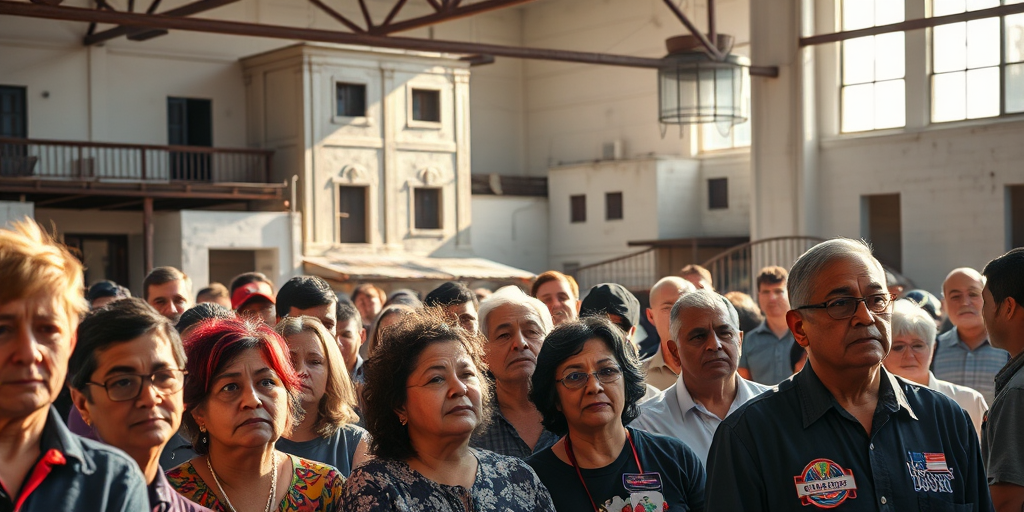Budget Cuts in South Texas: Communities Face Potential Funding Crisis
In a revealing and impactful dialogue with Rotarians from across South Texas, Jaime Longoria, the director of Hidalgo County’s Community Service Agency (CSA), highlighted the critical consequences of proposed budget cuts spearheaded by the administration of President Trump. With significant sums at stake for pivotal social programs, these cuts could profoundly impact vulnerable populations within the Rio Grande Valley (RGV).
The Core of the Budget Proposal
During a comprehensive session with Rotarians representing diverse South Texas locales, Longoria outlined the dire potential impact of eliminating $8 million from the Low-Income Household Energy Assistance Program (LIHEAP) that currently aids around 8,000 families in Hidalgo County. LIHEAP is instrumental in assisting low-income households with utility costs, serving as a lifeline for those struggling to meet basic needs.
“That’s $8 million to assist about 8,000 families across Hidalgo County afford utilities,” Longoria emphasized. Highlighting a critical aspect that often gets obscured in policy debates, he noted that 75% of LIHEAP beneficiaries are either elderly or children under 18.
Challenging common stereotypes that often mar public perception of aid recipients, Longoria emphasized the genuine human stories behind the numbers. “These are actual people. We can show you the statistics. That $8 million would go away,” he pointedly shared with attendees, compelling them to reconsider widespread narratives about those who rely on such assistance.
Beyond LIHEAP: Greater Cuts on the Horizon
The proposed budget plan extends beyond LIHEAP, also aiming to zero out funding from the Community Services Block Grant (CSBG) and the AmeriCorps program—critical programs addressing broader efforts in disaster relief, poverty alleviation, and education.
The CSBG, a program in place since 1980, would lose $2 million dedicated to Hidalgo County’s local needs. Cameron and Starr counties would also face considerable losses of over $1 million and about $700,000, respectively. This funding is a crucial pillar for addressing emergencies like floods and domestic violence, as well as for supporting young adults in obtaining further education.
“Hidalgo County has responded successfully to disasters and ongoing social issues due in part to this funding,” Longoria explained. “Without it, our ability to respond swiftly and effectively diminishes.”
Implications for the Rio Grande Valley
The Rio Grande Valley, a vibrant yet economically challenged region, stands poised to feel the brunt of these proposed budgetary changes more than many other areas. Local organizations, already stretched in addressing community needs, could face operational threats. The loss of critical funding would stifle efforts to aid the elderly, support educational initiatives for youth, and respond adequately to natural disasters.
Real estate agent Jose Martinez elaborated on the local economic ramifications: “The RGV market is tightly knit with community well-being. Accessible energy assistance not only supports those in need but also fosters economic stability, ultimately impacting housing and business opportunities.”
Local Reaction and Community Mobilization
Longoria’s comments came during a Prosperity Task Force webinar inspired by these proposed budget cuts. As community leaders convene to discuss their next actions, it’s clear that a collective local effort may be necessary to avert the looming crisis.
Activists and organizations are already rallying for increased visibility of the issue. Engaging with representatives and bolstering public awareness could yield political and social momentum, potentially curbing the most severe funding cut proposals.
Maria Diaz, a concerned Brownsville resident, reflects a broader sentiment, urging the public to speak up: “We need to convey to our policymakers that these programs are indispensable, as are the lives and futures they support.”
What Lies Ahead
Although the budget proposal presents dire scenarios, it’s pivotal to acknowledge that community action can influence impending decisions. The highlighted dialogue with Rotarians showcases a portion of the necessary advocacy that must occur to protect RGV residents.
Researchers and advocates recommend an ongoing evaluation of these programs’ successes, duly emphasizing politicians’ role in preserving funding. Furthermore, leveraging media platforms can sustain public engagement, ensuring elected officials remain attuned to constituent needs.
Local Resources and Engagement
Residents eager to connect on this issue are encouraged to participate in further town halls and informational sessions, where local authorities and nonprofit organizations plan to offer significant insights and mobilization strategies. Emphasizing the Valley’s history of resilience, community forums bolster solidarity and foster actionable plans.
In conclusion, the proposed cuts to essential social programs mark a flashpoint demanding community awareness and action. The vibrant, dynamic communities of the Rio Grande Valley must rally to preserve the well-being and prosperity of their most vulnerable members, ensuring that essential services continue uninhibited and that Valley residents have the opportunity to thrive.







